For most people, Annie Hall is the first Woody Allen film you hear about, and the first you ever saw. It’s been with us long enough to inspire a love that led to a whole website. It’s considered the best Woody Allen film, and we agree.
Woody Allen plays Alvy Singer. Right at the start he tells us – Annie (Diane Keaton) and he broke up. And he’s been going back through it all to try and work out where it went wrong. We go with him in flashback through Alvy’s life to try and find it. From childhood, early loves, first meetings and the break up…
Conception
“I guess that’s pretty much now how I feel about relationships; they’re totally irrational, and crazy, and absurd, but I guess we keep going through it because most of us need the eggs.”
Allen and co-writer Marshall Brickman had been kicking around ideas that would become Annie Hall for many years, even before Allen’s last film, Love And Death (1975). The idea was a three hour long, sprawling film that had many elements – a murder mystery, three relationships and a meeting with the devil. It would have been, at heart, a man who just turned 40 reflecting on his life. It was to be called Anhedonia – which means the inability to feel pleasure (like the opposite of hedonism).
The script for what would become Annie Hall started as a novel. According to Allen[2]:
[It] begins the same way Annie Hall does, with a monologue, but you don’t perceive it as a monologue because it’s written. It has the exact same scene, of Alvy meeting Annie at a movie house, and his obsessional thing of not wanting to go in after the movie had started.
It was later that Allen, with Brickman, would begin work on a script set in Victorian, England, and would be shot in Boston – a murder mstery. It was in discussion with Brickman that Allen decided it would be simpler to shoot in New York in contemporary dress. And then the night before writing was due to start, Allen decided to bring in the characters from his unfinished novel.
The script came together over long walks. Allen and Brickman would hit the New York pavements, between Lexington and Madison Avenue, looking at the city for inspiration as they talked through their ideas.
And there were a lot of ideas. Allen had made five similar comedies, and he threw every inventive idea at the screen. From breaking the fourth wall, kids discussing their future, characters physically walking through their own past, a persons spirit being disconnected in sex, to just the plain long shots – there is an inventive flair that was as thrilling as any of the farcical set pieces of his older films. The original shooting script was a lot wilder than even the finished product of Annie Hall.
Perhaps most important of all was that Woody Allen was trying to say something. Although still hidden in jokes, he wanted to say something about the decline in our culture. And more than sex, he wanted to talk about love and relationships. Many, many lines about modern relationships in this script have moved into popular culture – from being a member, to the shark, to needing the eggs.
Allen drew from everything – his childhood, his relationships (in particular with Diane Keaton, but not just), his parents, his heritage, his fame and more. Yet, many of the themes he explores here, he explored in his previous, farcical films. It is really the language that has changed. Allen told Rolling Stone [3]:
People tell me all the time that Annie Hall is autobiographical, and I keep telling them that it’s not really very autobiographical, but nobody wants to hear that. And one review – one out-of-town review that I had gotten said that in order to really enjoy the picture you had to know a lot about Diane’s and my private life together – and of course, this is completely untrue because I would say 80% of the film is totally fabricated.
Yet, Annie Hall showed the live of New Yorkers in a way we had not seen on screen, one close to Allen’s own life. The lining up for cinemas, the restaurants, the bookshops, the clubs, the conversation. This was closer to Woody Allen than the comic Russia of Love And Death.
There are also dozens of influences on show, referenced and name dropped. Ingmar Bergman, Groucho Marx and of course the Disney inspired animated sequence. There dozens of references, from the real life Marshall MacLuhan and Truman Capote. There’s books, there’s films, there’s so much. Together it built an image of a cool, sophisticated New York for the world to see, one that was a far cry from, say Martin Scorsese’s vision of New York.
It was ambitious, and widely so. But somewhere in the three hour projected running time was a story about a man, Alvy Singer, and his relationship with a girl, Annie Hall. She was named after Diane Keaton, whose real name was Diane Hall.
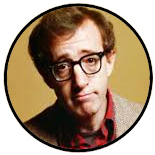
Release date
20th June 1977
Studio
United Artists
Duration: 93m
US Rating: PG-13
Rotten Tomatoes 98%
IMDB: 8.1
Roger Ebert: 4/4
US Box office: $38,251,425
US Adjusted Box Office: $149,232,000
Production
This is Allen’s first film shot primarily in New York (although some scenes are in Los Angeles). It is worth noting that this only happened six films into his career.
And the crew went all over New York. From Coney Island, Upper West Side, Long Island, Greenwich Village and much more. Allen actually blew his initially $3m budget out to $4m.
It wasn’t the easiest of shoots and Allen was at times unproductive. Apparently, there was a day on Coney Island where shooting didn’t happen at all, despite the crew being ready to go.
Allen shot lots of footage, with lots of it being ultimately cut. Over the years various production photos of deleted scenes have been leaked. Scenes that ended up ultimately cut include:
- Annie, Rob and Allen visiting the devil below ground, and then reappearing on the street. Richard Nixon was featured and this scene was used in Deconstructing Harry (1997).
- More of Alvy questioning strangers on the street about their love lives after Annie storms off
- More with the kids in the classroom, including a six year old crush, played by Brook Shields (her character was named Judy Horowitz). We also flash forward to see her life in the present, surrounded by kids.
- The kids out on a Thanksgiving Day pageant where young Alvy is a pilgrim with his head in a stockade.
- A fantasy game of basketball with Alvy playing with philosophers like Kant, Nietzsche and Kierkegaard, against New York Knicks Bill Bradley, Walt Frazier and Earl The Pearl. This scene would have come after Alvy and Robin fight whilst watching the Knicks.
- The whole murder mystery subplot. Annie and Alvy come home from the cinema and find one of their neighbours has died, perhaps suspiciously. This whole subplot would for the basis for Manhattan Murder Mystery (1993).
- Alvy as teenager, working in junk food with Danny Aiello, and getting into a fight.
- A trip to Nazi Germany, where Alvy is (comically) describing his inability to stand up to torture.
- Scenes involving all the wives and lovers. One of was Garden Of Eden recreation with Shelley Duvall.
- A black and white “Invasion Of the Element”, with Alvy’s parents being nervous about a new black family who moved into the neighbourhood. A play on Invasion Of the Bodysnatchers (1956).
- Alvy seeing traffic and street signs in Times Square that gives him advice to follow Annie to LA. This was the last day of initial shooting.
- A French resistance parody.
- More of Alvy in prison after LA, winning a joke telling contest.
- A parody of the film Angel On My Shoulder (1946).
- Harvey Fierstein had a role that was filmed and ultimately cut.
- More time with Annie’s parents and Duane.
- Annie, Rob and Alvy watches young Alvy play basketball in their trip back to the old neighbourhood. Young Alvy checks his own temperature with a thermometer mid-game.
Editor Ralph Rosenblum was the man tasked with making sense of everything that was shot. His first cut took six weeks, but everyone was disappointed with that first cut. The only material that seemed to work was the parts with Annie.
It was clear to Woody and me that the film started moving whenever present-tense material with him and Keaton dominated the screen.
Allen then went back for five reshoots, including two for the ending. Allen also wrote several new scenes to bridge other scenes. These included a new opening monologue to camera, the sneezing cocaine scene, the very final scene, and others.
None of this unreleased footage has ever seen the light of day, although it is in Allen’s archives, apparently.
Diane Keaton’s particular dress sense in this film has made a lasting impact on the fashion world. The look was all hers. A costume department wanted her to wear something different but Allen disagreed. Working in costumes were Ruth Morley and Ralph Lauren, who helped Keaton express her style.
The cartoon sequence was based on Stuart Hample’s comic strip Inside Woody Allen. The strip starred Allen’s persona and was approved by Allen but did not write it. Hample’s cartoon version of Allen is the one you see on screen, helping to make that strip a success.
This is not a particularly music driven film, with Allen leaving the soundtrack quite spare. This was a deliberate move, and perhaps an aping of his hero Ingmar Bergman. Says Allen[4]:
“I was just experimenting, seeing what it would be like to be very very sparing with the music. I was so uncompromising in my feeling. I didn’t care if the audience liked it or not I just wanted to do what I wanted to do it there, make some turning point. If I did that same film today, it would probably be full of music.”
Allen does make use of music in the plot, with Annie singing in nightclubs songs of great poignance for the film – It Had To Be You when the couples court, and Seems Like Old Times when they are done and looking back. Seems Like Old Times also plays in the final scene, including over the montage of key scenes from the film.
Overall, production took ten months. It would be one of Allen’s longest productions. Working up to the last minute, Allen and his team definitely pulled it off. Says co-writer Marshall Brickman[5]:
“I’ll never forget suddenly there was an ending there – not only that, but an ending that was cinematic, that was moving, with that simple recapitulation of some scenes, with that music… The whole film could have gone into the toilet if there hadn’t been that last beat on it.”
Even just a few weeks prior, the film officially had no name. Exhibitors only had “new Woody Allen film” to go on. Anhedonia, Allen’s preferred title, was loved by no one. Other titles suggested were “It Had to Be Jew”, “A Rollercoaster Named Desire”, and “Me and My Goy”.
Once he had the title, he finally landed on the distinctive title cards he would use for every film in his career. White test on black, Windsor Light Condensed font. Title case, with the cast listed in alphabetical order by billing. Again, Ingmar Bergman was known for using the same titles, but for Allen, the initial inspiration was more practical. Says Allen[4]:
“I had done some fancy titles on Bananas and Everything You Always Wanted To Know About Sex…, and then I thought to myself, ‘It’s silly to spend money on titles! It’s a very American stupid habit. I’m going to get the cheapest titles I can, just a plain announcement.’ And I picked the typeface that I liked, and I never changed it after that.”
Allen would eventually say about the film after it was finished[6]:
“I wanted it to be about real people, real problems besetting some fairly neurotic characters trying to exist in male-female relationships in America in 1977. So it turns out to be more serious than anything I’ve ever tried before.”
is featured in our book
The Woody Allen Watcher’s Guide
Book 1
Cast
Woody Allen plays Alvy Singer. It’s worth noting that this is the first time Allen plays a sort of normal person in one of his own films. His early comic persona was gone, replaced by something with a few more dimensions. He is also a very unlikely leading man at this time. Comic foil – yes. But he’s not the usual Robert Redford type.
Diane Keaton plays Annie Hall. Huge parts of Annie was based on Keaton. It was Keaton’s own fashion style that was used in the film (and we still see around today). Her real surname is Hall. She was a night club singer. We also see a more romantic, vulnerable performance from her, one that would earn her the Academy Award for Best Actress. Kay Lenz was apparently considered for the role, but it is hard to imagine anyone but Keaton playing Annie.
Like Allen, she tends not to watch herself. She did see Annie Hall though. Says Keaton[7]:
“I thought it worked emotionally. I was surprised that in the end, I felt something when we said goodbye.”
Tony Roberts plays Rob, in his first appearance in an Allen film. Roberts and Allen were good friends, having met during Don’t Drink The Water and Play It Again, Sam. Roberts starred in that play and also the film version. He started his acting career on Broadway. His girlfriend was starring with Robert Redford in the Neil Simon’s play Barefoot In the Park, and when Redford took a break, she suggested her boyfriend. It was a simpler time. Having auditioned four times for Don’ Drink the Water, but missing out, Allen was impressed with him in this play. According to Roberts, Allen went backstage and said[8]:
“You were great. How come you’re such a lousy auditioner?”
Roberts had also appeared in great films like Serpico (1973) and The Taking Of Pehlam One Two Three (1974).
Much like how Allen’s real relationship with Keaton made it to the script, so did many aspects of Allen and Roberts friendship – including the use of their real nicknames for eachother; Max. Roberts would appear in four more of Allen’s films.
Roberts’ trailer was broken into during production. He lost his possessions and a script. The script was found in the garbage nearby – which Allen took as criticism. He did joke that maybe Mel Brooks stole it.
The supporting cast:
Colleen Dewhurst plays Mrs Hall, Annie’s mother. Dewhurst was an experienced stage actress, and was nicknamed ‘The Queen Of Off-Broadway’. Her screen roles were much fewer, and is probably best known for playing Candance Bergen’s mother in Murphy Brown. Said Allen[4]:
“I picked her not only because she’s a fine actress, but she also looks like Diane’s mother. Diane’s mother has that real American pioneer look, very classic. And Colleen not only had the look, but she’s such a wonderful actress.”
Shelley Duvall plays Pam. She became famous for her work with Robert Altman and later appeared in Stanley Kubrick’s The Shining (1980). Like many of the roles, her screentime was reduced when the film became more about Alvy and Annie.
Carol Kane plays Allison Portchnik. She was coming off an Academy Award nomination for her work on Hester Street (1975), as well as appearing in films like Carnal Knowledge (1971) and Dog Day Afternoon (1975). She would have a long career in both film and television.
Janet Margolin plays Robin. Margolin had appeared in Allen’s first film Take The Money And Run (1969). She had a career in TV since then and she would have one more significant film role in Ghostbusters II (1989). Her part was cut down as well. This was the last time she would work with Allen.
Paul Simon plays Tony Lacey. Simon is, of course, from Simon & Garfunkel, and at this point several years into a solo career to much acclaim – his last record Still Crazy After All These Years had won the Grammy for Album Of the Year. Simon would try his hand with film and after this wrote and directed a film of his own called One Trick Pony (1980). The film flopped and Simon soon returned to music, and to the top of the charts with Graceland.
This was Simon’s first foray into film. There is an irony in casting Simon in the role of LA record producer, as he is as tied to New York as Allen[4].
“I was looking for a fresh look. Somebody interesting that you don’t see acting very often. I think even that it might have been Marshall Brickman who suggested Paul Simon for the part. And it seemed a very good idea.”
Shelley Duvall and Paul Simon began a romantic relationship after meeting on the set of Annie Hall.
Christopher Walken plays Duane Hall, Annie’s brother. This was one of Walken’s first roles, and a breakout for him. He would follow it up with The Deer Hunter (1978), Pennies From Heaven (1981) and another 40 odd years of incredible performances. On his casting and its legacy[9]:
“That’s probably why I started getting all those strange characters – because that was one of the first things I did that was seen by a lot of people. And here I was playing a suicide case … I guess one job leads to another. The next movie I’d did was The Deer Hunter, and I shoot myself, so it’s hard to get cheery parts after that.”
He was miscredited as ‘Wlaken’ in the final film. Walken had the typical brief, silent audition. His part was cut down, but it was almost cut completely.
Walken would later be cast by Allen in September (1987), but was ultimately recast completely. He would also appear, so to speak, with Allen in Antz (1998).
Not given top billing, but there are many significant cameos, including Truman Capote, Jeff Goldblum, Marshall McLuhan and Sigourney Weaver.
Locations
- Coney Island Thunderbolt Rollercoaster (demolished)
- St Bernard School
- E 66th Street
- Beekman Theatre
- Napeague Bay, Beach House
- The Plaza Theatre
- Annie’s apartment, 36 E 68th Street
- First kiss in front of 9 Greenwich Village
- Central Park Zoo
Crew
Co-writer Marshall Brickman returns. He co-wrote Sleeper with Allen, and would return twice more. He would share an Academy Award with Allen for Best Original Screenplay for his work here. Says Allen, of how the pair worked together[4]:
“We walked the streets together, we had lunch together, dinner together. We sat in a room together. We talked, talked, talked. And then when all the talking was done I went and wrote the script.
I felt I had to be the one to actually write it down. Because I had to say it, I wanted it written down the way I’m comfortable saying it.”
Gordon Willis joins our story. The cinematographer worked on The Godfather (1972), All The President’s Men (1976) and several other acclaimed films. He would begin a fruitful collaboration with Allen on this film – both men bringing out what is considered the best work out of the other. The collaboration would last into The Purple Rose Of Cairo (1985). Says Allen[4]:
“Gordon was a very important teacher to me, from a technical point of view. He’s a technical wizard. He’s also a great artist. He showed me things about camera and lighting; it was a real turning point for me in every way. From then on, I really count Annie Hall as the first step toward maturity in some way in making films.”
Willis is popularly known as ‘the prince of darkness’. One of his signature moves was to shoot in low, or no lights. Many scenes in the film feature strong shadows, and many od the street scenes were shot naturally.
Ralph Rosenbaum returns. He takes on a mammoth role in this film, helping to make sense the variety of footage and outtakes. His assistant on this film was Susan E Morse, who would go on to serve as editor on over twenty Allen films.
Robert Greenhut comes onboard as executive producer. He produced dozens of films, including The Front (1976) which starred Allen, and would work with Allen for the next twenty years. Greenhut oversaw the logistics of how Allen made films, allowing him to fulfill his vision of one film a year. Greenhut spoke about Allen with the Chicago Tribune in 1987[10]:
“He’s a bottomless pit of ideas. He works a full six-day week. He writes as fast as any writer alive. He can turn out a juicy screenplay in a month. He could make many more movies if I could figure out a way to help him. It’s such a cumbersome process.”
Also new to Allen’s world is Mel Bourne as Art Director. Bourne would go on to work with Allen on his next six films.
Photographer Brian Hamill covered the production, and shot many iconic images of the production. Hamill would shoot several more films, the next being Manhattan (1979).
Juliet Taylor, Charles Joffe, Jack Rollins all return.
Release
Annie Hall was first shown on 27 March 1977 at the closing night of the Los Angeles International Film Exposition (Filmex), the annual film festival. Woody Allen attended the festival, accompanied by Charles Joffe, Carol Kane and Tony Roberts.
It was released to US cinemas on 20 April 1977. It knocked Rocky off the top of the US box office.
No soundtrack was ever released. It is impossible to get those Diane Keaton songs.
The film’s tagline: A nervous romance.
Reception
Annie Hall earned $38,251,425 at the US box office. It was the #1 film in the US on 24th April 1977 for three weeks. It was the 7th highest earning film of 1977.
Adjusted for inflation, this is Allen’s highest earning film in the US.
Annie Hall has had a towering influence in pop culture.
Jack Rollins, Allen’s manager and producer, bought a race horse and called her Annie Hall. Emma Stone named her dog Alvy.
It has been referenced and parodied endlessly. If we had to pick one, it would be the 2013 episode of The Simpsons with Bart and Lisa dressed as Alvy and Annie.
The Writers Guild Of America voted it the funniest comedy of all time in 2015.
Voted 68th in Empire’s The 500 Greatest Movies Of All Time in 2013.
The BBC voted it the 23rd best American Film in 2015.
Sight & Sound’s poll in 2012 listed it as the 127th best film of all time, and 132nd in their director’s poll.
Amongst the film’s many fans are director Richard Curtis, writer Phil Rosenthal, Ben Stiller and Mark Webb.
Allen has said that over the years he has been made offers for a sequel.
Awards & Nominations
Common mythology about this film is that Annie Hall is the only comedy to win Best Picture at the Academy Awards. There’s actually others – Tom Jones (1963) and several before that. But it was the last comedy to win Best Picture, and the only one to do so in the last 50 years.
Perhaps the more interesting bit of trivia is that this is the second shortest film to win Best Picture at 93 minutes. Marty (1955) is the shortest at 91 minutes.
Allen also proved that he wasn’t joking about his dim view on awards. He didn’t turn up to any of them, preferring to stay in New York to honor his regular jazz show at Michael’s Pub. Says Allen[6]:
“I know it sounds horrible,but winning that Oscar for Annie Hall didn’t mean anything to me. I have no regard for that kind of ceremony. I just don’t think they know what they’re doing. When you see who wins those things – or doesn’t win them – you can see how meaningless this Oscar thing is.”
Charles H Joffe accepted the Academy Award for Best Picture. Marshall Brickman accepted the Best Original Screenplay award. Presenters Cicely Tyson and King Vidor accepted the award for Best Director.
50th Academy Awards
4 wins from 5 nominations
Best Picture
Best Director – Woody Allen
Best Actress – Diane Keaton
Best Original Screenplay – Woody Allen and Marshall Brickman
– Best Actor – Woody Allen
35th Golden Globe Awards
1 win from 5 nominations
Best Actress in a Motion Picture, Comedy or Musical – Diane Keaton
– Best Motion Picture, Comedy or Musical
– Best Director, Motion Picture
– Best Actor in a Motion Picture, Comedy or Musical
– Best Screenplay, Motion Picture – Woody Allen & Marshall Brickman
31st British Academy Film Awards
5 wins from 6 nominations
Best Actress – Diane Keaton
Best Direction – Woody Allen
Best Editing – Ralph Rosenblum and Wendy Greene Bricmont
Best Film
Best Screenplay – Woody Allen and Marshall Brickman
– Best Actor – Woody Allen
César Awards
1 nomination
– Best Foreign Film
Writers Guild Of America Awards
1 win from 1 nomination
Best Comedy Written Directly For Screen – Woody Allen and Marshall Brickman
Directors Guild Of America Awards
1 win from 1 nomination
Outstanding Directorial Achievement in Motion Pictures
What did you you think?
[polldaddy rating=”8422595″]
“I feel that life is divided into the horrible and the miserable. That’s the two categories. The horrible are like, I don’t know, terminal cases, you know, and blind people, crippled. I don’t know how they get through life. It’s amazing to me. And the miserable is everyone else. So you should be thankful that you’re miserable, because that’s very lucky, to be miserable.”
“That sex was the most fun I’ve ever had without laughing.”
“A relationship, I think, is like a shark. You know? It has to constantly move forward or it dies. And I think what we got on our hands is a dead shark.”
“Don’t you see the rest of the country looks upon New York like we’re left-wing, communist, Jewish, homosexual pornographers? I think of us that way sometimes and I live here.”
“I can’t enjoy anything unless everybody is. If one guy is starving someplace, that puts a crimp in my evening.”
“We had a saying – that those who can’t do, teach. And those who can’t teach, teach gym. And those who couldn’t do anything, I think, were assigned to our school.”
“Harvard makes mistakes too! Kissinger taught there!”
2. Bananas (1971)
3. Everything You Always Wanted to Know About Sex* (*But Were Afraid to Ask) (1972)
4. Sleeper (1973)
5. Love And Death (1975)
6. Annie Hall (1977)
7. Interiors (1978)
8. Manhattan (1979)
9. Stardust Memories (1980)
10. A Midsummer Night’s Sex Comedy (1982)
11. Zelig (1983)
12. Broadway Danny Rose (1984)
13. The Purple Rose Of Cairo (1985)
14. Hannah And Her Sisters (1986)
15. Radio Days (1987)
16. September (1987)
17. Another Woman (1988)
18. Crimes And Misdemeanors (1989)
19. Alice (1990)
20. Shadows And Fog (1991)
21. Husbands And Wives (1992)
22. Manhattan Murder Mystery (1993)
23. Bullets Over Broadway (1994)
24. Don’t Drink The Water (1994)
25. Mighty Aphrodite (1995)
26. Everyone Says I Love You (1996)
27. Deconstructing Harry (1997)
28. Celebrity (1998)
29. Sweet And Lowdown (1999)
30. Small Time Crooks (2000)
31. The Curse Of the Jade Scorpion (2001)
32. Hollywood Ending (2002)
33. Anything Else (2003)
34. Melinda And Melinda (2004)
35. Match Point (2005)
36. Scoop (2006)
37. Cassandra’s Dream (2007)
38. Vicky Cristina Barcelona (2008)
39. Whatever Works (2009)
40. You Will Meet A Tall Dark Stranger (2010)
41. Midnight In Paris (2011)
42. To Rome With Love (2012)
43. Blue Jasmine (2013)
44. Magic In the Moonlight (2014)
45. Irrational Man (2015)
46. Café Society (2016)

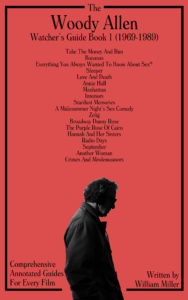
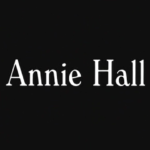
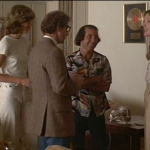
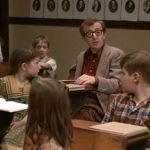
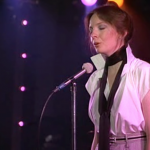
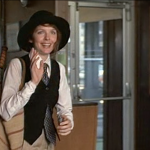
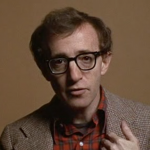
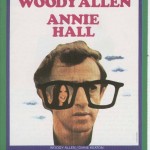
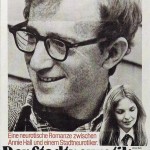
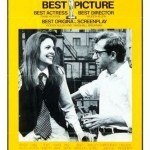
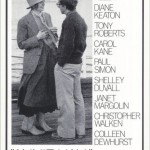
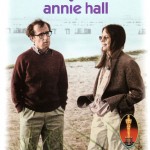
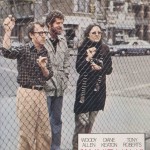
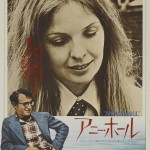
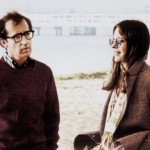
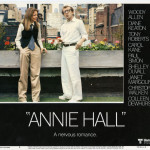
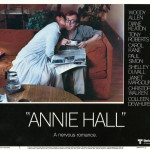
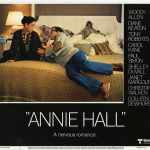
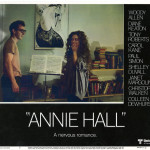
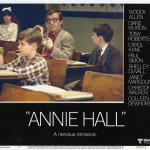
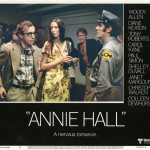
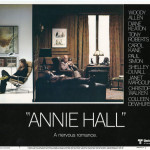
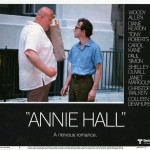
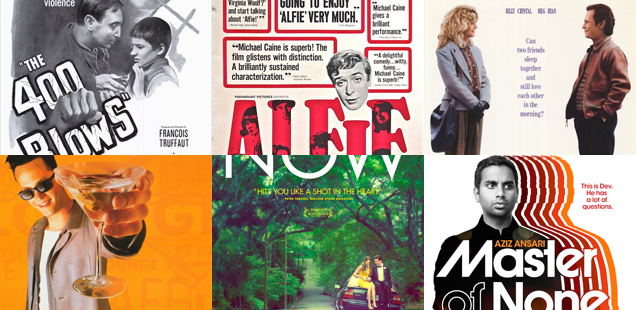
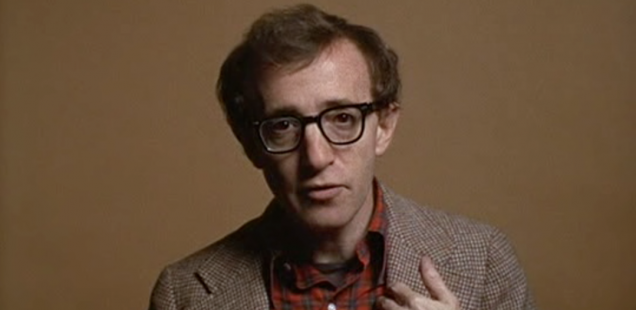
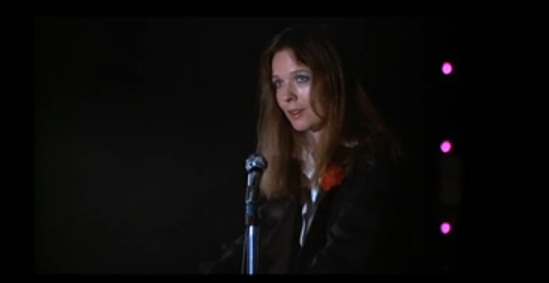
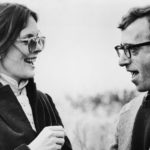
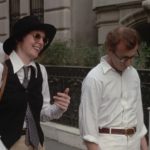
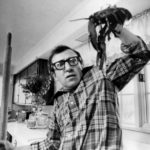
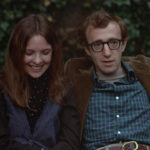
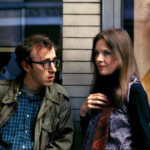
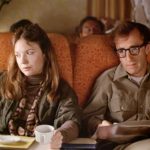

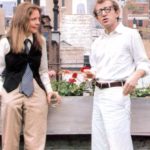
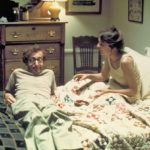
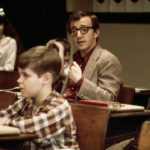
3 Comments
One of the great love stories
This today.
Well, here’s a story and the majority are idiots were two common refrains between myself and the younger of the two McLuhan brothers. Marshall was born in Edmonton Alberta in 1911 and Maurice was born in 1913 in Lac Loo for all I know. While forced to live in Edmonton a few years back I witnessed a late night vote determining a new post secondary school of media ought be called the ‘Leslie Nielson School of Advanced Media’ rather then the ‘Marshall McLuhan School of Advanced Media’. I recoginized Maurice in September 1983 from his brother’s Karsh photograph wherein Marshall is envoloped in walls of books he is purporting shall become obsolete when ‘everything you want to know will come through the air’. …
The photo of Pam/Shelley Duvall is incorrect. You are showing Jessica Harper surely ?